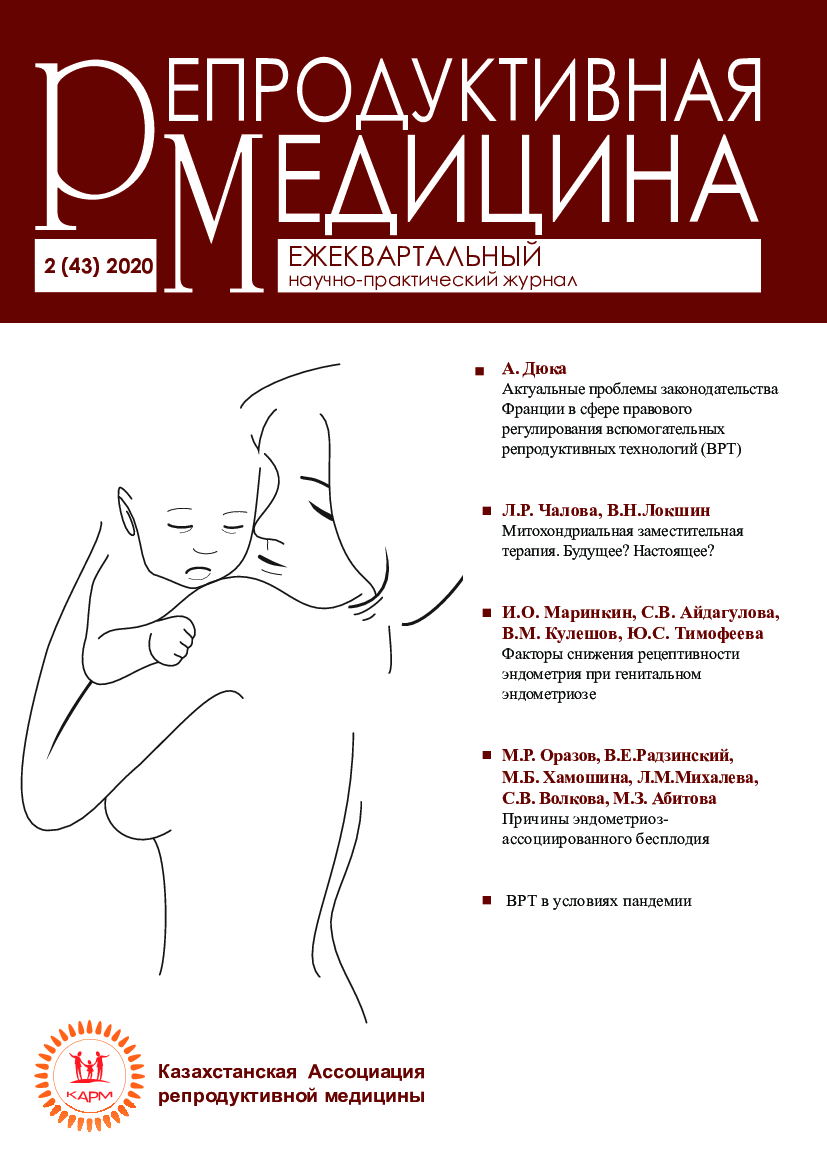Prognostication labor dystocia and cesarean section
DOI:
https://doi.org/10.37800/RM2020-1-14Keywords:
childbirth, labor dystocia, cesarean section, prognosisAbstract
The article presents the results of the analysis of clinical and anamnestic indicators to create a model for predicting the
development of labor dystocia that caused Caesarean section. The most significant prognostic factors included in the prognostic
model were fetus-pelvic imbalances, diabetes mellitus, a burdened gynecological history and cardiovascular diseases in the
nulliparous women of late reproductive age. Assessment of the totality of risk factors made it possible to achieve an accurate
prognosis in 88.6% of cases with a sensitivity of 40.4%, specificity - 92.1%.
References
World Health Organization Human Reproduction Programme A. WHO statement on caesarean section rates. Reprod Health Matters. 2015;23(45): 149–50
Safe prevention of the primary cesarean delivery. American College of Obstetricians and Gynecologists (College); Society for Maternal-Fetal Medicine, Caughey AB, Cahill AG, Guise JM, Rouse DJ. Am J Obstet Gynecol. 2014 Mar;210(3):179-93. doi: 10.1016/j.ajog.2014.01.026
Highley LL, Previs RA, Dotters-Katz SK, Brancazio LR, Grotegut CA. Cesarean delivery among women with prolonged labor induction. J Perinat Med. 2016;44(7):759-766. doi: 10.1515/jpm-2014-0357
Danilack VA, Hutcheon JA, Triche EW, Dore DD, Muri JH, Phipps MG, Savitz DA. Development and validation of a risk prediction model for cesarean delivery after labor induction. J Womens Health (Larchmt). 2019 Oct 29. doi: 10.1089/jwh.2019.7822
Tolcher MC, Holbert MR, Weaver AL, McGree ME, Olson JE, El-Nashar SA, Famuyide AO, Brost BC. Predicting cesarean delivery after induction of labor among nulliparous women at term. Obstet Gynecol. 2015;126(5):1059-68. doi: 10.1097/AOG.0000000000001083
Guan P, Tang F, Sun G, Ren W. Prediction of emergency cesarean section by measurable maternal and fetal characteristics. Guan P, et al. J Investig Med. 2020;0:1–8. doi:10.1136/jim-2019-001175
Миляева Н.М. Современные подходы к прогнозированию первичной слабости родовой деятельности у первородящих женщин. Вестник уральской медицинской академической науки. 2017; 14(2): 147–155, DOI: 10.22138/2500-0918-2017-14-2-147-155;
Ткачик С.Я. Возможности прогнозирования слабости родовой деятельности. Здоровье женщины. 2016, 1 (107): 107-109.
Al-Qahtani S, Heath A, Quenby S, Dawood F, Floyd R, Burdyga T, Wray S. Diabetes is associated with impairment of uterine contractility and high Caesarean section rate. Diabetologia. 2012; 55:489–498;
Gam CMBF, Larsen LH, Mortensen OH, Engelbrechtsen L, Poulsen SS, Qvortrup K et al. Unchanged mitochondrial phenotype, but accumulation of lipids in the myometrium in obese pregnant women. J Physiol. 2017; 595(23):7109-7122. doi: 10.1113/JP274838;
Hautakangas T, Palomäki O, Eidstø K, Huhtala H, Uotila J. Impact of obesity and other risk factors on labor dystocia in term primiparous women: a case control study. BMC Pregnancy Childbirth. 2018; 18(1):304. doi: 10.1186/s12884-018-1938-3;
Herstad L, Klungsøyr K, Skjærven R, et al. Elective cesarean section or not? Maternal age and risk of adverse outcomes at term: a population- based registry study of low-risk primiparous women. BMC Pregnancy Childbirth 2016;16:230
Additional Files
Published
How to Cite
Issue
Section
License
The articles published in this Journal are licensed under the CC BY-NC-ND 4.0 (Creative Commons Attribution – Non-Commercial – No Derivatives 4.0 International) license, which provides for their non-commercial use only. Under this license, users have the right to copy and distribute the material in copyright but are not permitted to modify or use it for commercial purposes. Full details on the licensing are available at https://creativecommons.org/licenses/by-nc-nd/4.0/.




